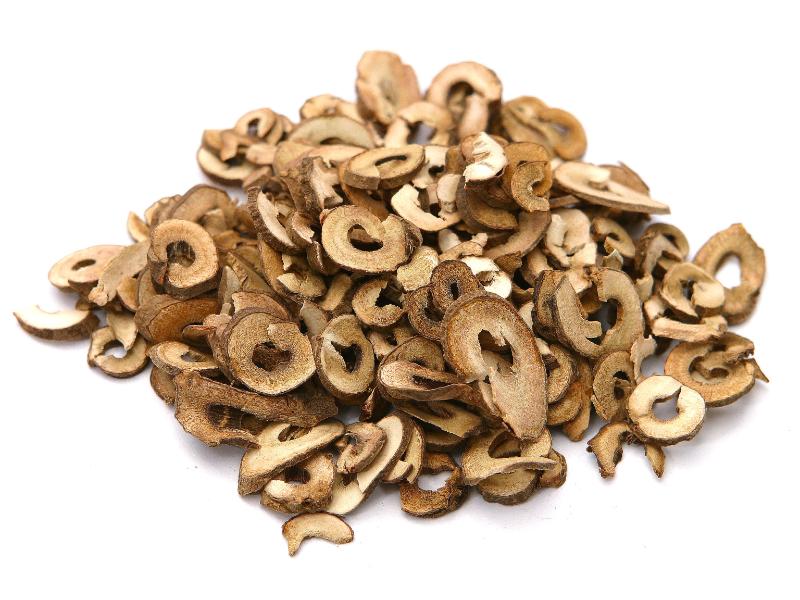Search in medicinals
Moutan Cortex
Moutan [bark]
牡丹皮 〔牡丹皮〕 mǔ dān pí

Alternate English names: tree peony [bark]
Alternate Chinese names: 丹皮 dān pí
Kingdom: Plant
Origin in PRC Pharmacopoeia: Paeonia suffruticosa Andr. (PRC Pharmacopoeia)
Origin in unofficial sources: Paeonia suffruticosa Andr.*; Paeonia moutan Sims. [= P. suffruticosa Andr.]; Paeonia suffruticosa Andr. var. spontanea Rehd.; Paeonia papaveracea Andr.; Paeonia lutea Franch.; Paeonia delavayi Franch.; Paeonia potanini Kom.; Paeonia szechuanica Fang; Paeonia thalictrumifoliae C. Ho et S.Y. Chen; Paeonia yunnanensis Fang
Use: Medicinal
Category: Heat-clearing agents / Heat-clearing blood-cooling agents
Properties: Bitter, acrid; slightly cold.
Channel entry: Heart, liver, and kidney channels.
Actions and indications:
- Clears heat and cools the blood: Maculopapular eruption, vomiting of blood (blood ejection), and nosebleed; warm evil damaging yīn, leading to yīn vacuity heat effusion.
- Quickens the blood and transforms stasis: Amenorrhea or menstrual pain;
concretions and conglomerations ; injury from knocks and falls. - Abates vacuity fire: Yīn vacuity with internal heat.
Dosage and method: Oral: 6–12g in decoctions. Mǔ dān pí is used raw to clear heat and cool the blood. It should be mix-fried with yellow rice wine to quicken the blood and dispel stasis.
Warnings: Contraindicated in vacuity cold patterns, pregnancy, and profuse menstruation.
Product description: This bark resumes its original shape after being removed from the root by a single longitudinal cut. It is 2–4 mm thick, 0.6–1.4 cm in diameter and comes in lengths of 10–20 cm. It is a grayish brown on the outside with a slight purple hue. The outer surface has conspicuous long lenticels and scars left where branch roots were removed. Sometimes the cork is stripped off , exposing a brighter red coloring. This is called Fěn dān pí (粉丹皮 Moutan Radicis Cortex Rasus, shaved moutan [root bark]). The flesh and inner surface are gray. This bark breaks cleanly, revealing a pale red fracture surface. The decocting pieces are slices 1–2 mm thick, appearing pinkish on the cut edge. Stir-frying and charring darken the color.
Quality: Better barks are thick, evenly sized, round and straight, have a thin skin and thick flesh, do not turn red with time, and have no wood or fine roots attached.
Production area: ānhuī, Sìchuān, Gānsū.
Etymology: The name mǔ dān pí 牡丹皮, literally male cinnabar bark,
reflects the color of the red flower. The Táng dynasty name mù sháo yào 木芍药 is corresponds to the English tree peony (mù 木 means tree
).